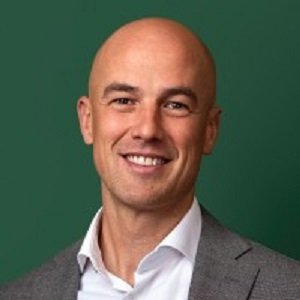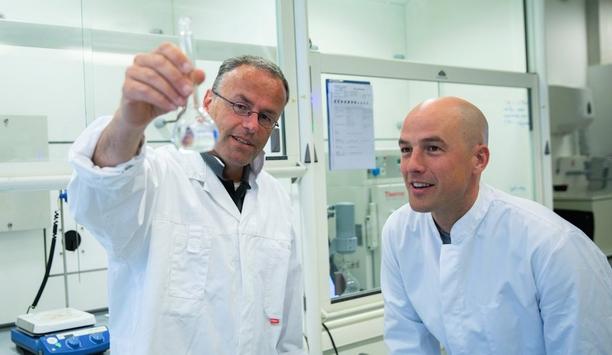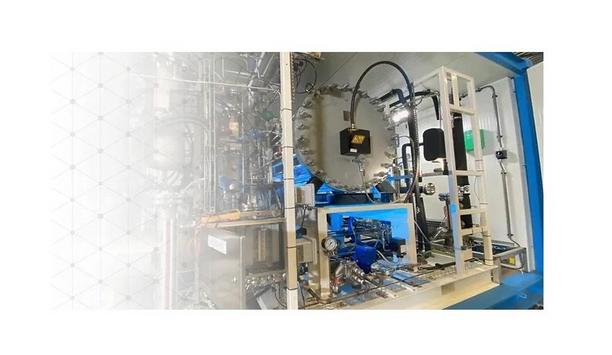Battolyser Systems - Experts & Thought Leaders
Latest Battolyser Systems news & announcements
The world’s first large-scale Battolyser factory will be constructed in the port of Rotterdam to meet soaring demand for green hydrogen and electricity storage. “This partnership will develop the first industrial green hydrogen equipment manufacturing facility in The Netherlands,” said Mattijs Slee, CEO, of Battolyser Systems, adding “With our offshore wind potential, strong infrastructure, and world-class heavy industry, The Netherlands can now develop a sustainable and resilient energy system.” Battolyser factory The 1 GW per annum Battolyser factory will be located in the M4H area, an industrial site in the heart of Rotterdam. The cost of developing the 14,000 m2 production site, complete with new office and laboratory facilities, is estimated to be about €100 million. Once fully operational it will require some 700 directly employed staff plus create up to four times as many indirect jobs with supply chain partners. Hydrogen Hub Germany and The Netherlands are the 1st and 2nd largest hydrogen consumers in Europe “Rotterdam positions itself as Europe’s Hydrogen Hub and new sustainable industries are welcomed to help realize the transition that’s taking place in Rotterdam. We need companies such as Battolyser Systems, and we believe the port is the ideal place for its first large-scale factory,” said Allard Castelein, CEO of Port of Rotterdam. Germany and The Netherlands are the 1st and 2nd largest hydrogen consumers in Europe. Both have giga-scale plans for green hydrogen that will be consumed in or pass through the port of Rotterdam. Green hydrogen equipment manufacturing “In this industrial ecosystem, the Battolyser factory is expected to become an anchor for a new platform of companies committed to building a sustainable equipment manufacturing supply chain,” said Allard Castelein. He adds, “Companies in the port are actively working on projects regarding production, imports, shipping, storage, and use of green hydrogen. With this factory, we add green hydrogen equipment manufacturing to that portfolio. This is of great value for the port’s ongoing efforts to decarbonize and facilitate sustainable industries for the future.” Headquarters and R&D center A Battolyser can produce hydrogen from solar and wind when power prices are low and provide electricity The factory will also act as Battolyser Systems’ headquarters and R&D center, opening during the second half of 2024. A final investment decision is scheduled for 2023 and requires private and public investments to compete internationally. Battolyser has developed and manufactured the world’s first integrated battery/electrolyzer system. A Battolyser can produce hydrogen from solar and wind when power prices are low and provide electricity to the grid when prices are high. Flexible and robust system The system is extremely flexible, efficient, and robust. It can alleviate grid congestion, enable the build-out of more solar and wind energy developments, and offer the lowest cost of green hydrogen. The Battolyser technology is deployable at scale using abundant and conflict-free active materials: nickel and iron. The technology was invented by Prof. Dr. Fokko Mulder and his research team at the Delft University of Technology. Commercialization facility “This partnership with the port of Rotterdam to develop our first large-scale manufacturing facility together is a big step forward in our commercialization. The factory allows us to deliver Battolysers at an industrial scale and affordable prices. We are in constructive conversation with the Dutch government and EU institutions, and we are confident that together we can secure the required funding,” said Mattijs Slee. He adds, “A net zero world will require between 5,000 and 10,000 GW of installed electrolyzer capacity. The electrolyzer supply chain is a huge opportunity for The Netherlands to develop new sustainable industries that can support our energy transition needs and offer export products to the world.”
Battolyser Systems has been awarded a €250,000 subsidy by the Dutch sustainable energy innovation accelerator, 'TKI Nieuw Gas – Topsector Energie', as part of its hydrogen subsidy program. The subsidy will further strengthen the collaboration between Battolyser Systems and Delft University of Technology to commercialize the Battolyser technology for implementation at scale. innovation of the Battolyser® “We are very proud of this recognition by the Dutch Government,” said Mattijs Slee, CEO, Battolyser Systems, adding “This grant strengthens the growing appreciation that our integrated battery/electrolyser technology can be the missing link that allows deep renewable electrification of our energy system and provide green hydrogen production for sectors that cannot be electrified.” Thereby enabling accelerated innovation of the Battolyser® technology on cell and component level The subsidy will help finance the operation of a multiple-cell research unit that will become operational during the first half of 2022 and will allow tests at industrial conditions, thereby enabling accelerated innovation of the Battolyser® technology on cell and component level. In parallel, this research unit can simulate renewable energy input sources, such as solar and wind, to validate Battolyser® business models and test energy system integration. Breakthrough integrated battery “With the support of TKI Nieuw Gas, we will focus on expanding our research and testing capabilities to accelerate the delivery of an improved series of cell and stack designs,” said Prof. Dr. Fokko Mulder, Inventor of the Battolyser® and Professor at the Chemical Engineering department of Delft University of Technology. Battolyser Systems has developed a breakthrough integrated battery/electrolyser, called BattolyserTM®, that can store electricity and produce hydrogen from renewable power, to balance societal energy demand. The Battolyser® can instantly switch back and forth between battery charging, followed by hydrogen production when fully charged, and battery discharging. Hence, it can produce hydrogen when electricity prices are low and sell electricity when prices are high. “The Battolyser® is never idle and is always working for you,” said Mattijs Slee, adding “The system is highly efficient and uses abundant nickel and iron electrode materials, which makes it eminently suitable for applications at scale.” TKI Nieuw Gas's ambition The subsidy is linked to TKI Nieuw Gas's ambition to stimulate cleantech companies and research institutions in their mission to make hydrogen commercially available in the short term, providing support for research on cost reduction, system efficiency, and scalability. The project is co-financed by ‘TKI Energie’ with funds from the Dutch Ministry of Economic Affairs and Climate to support knowledge and innovation by the private sector. “Battolyser Systems is growing rapidly and we are looking for entrepreneurial customers that want to make an investment decision for a Battolyser® commercial demonstration project with a capacity of 0.5 to a few MWh/MW to be operational in 2023,” said Mattijs Slee.
Delft University of Technology (TU Delft) spin-off BattolyserⓇ is preparing to install a large-scale battery-based energy storage system that will also produce hydrogen. The patented technology will challenge the dominance of conventional alkaline electrolyzers in hydrogen and ammonia production and help make the transition to clean energy possible. Battolyser® solution The Battolyser® solution was designed to do three things well: One: capture and store surplus renewable energy, which is generated when there is a lot of sun and wind. Two: produce hydrogen once the battery is fully charged. Three: use the electricity stored in the battery to continue producing hydrogen or return this electricity to the grid when there is a shortage of solar and wind power. “Conventional electrolyzers can do this too, as can conventional batteries, but the patented Battolyser technology does it better and at lower costs in situations where it matters,” said its inventor, Fokko Mulder, Professor at the Chemical Engineering department of the Delft University of Technology. conventional alkaline electrolyzers Battolyser® system can instantly switch back and forth between full hydrogen production and battery discharging Both produce hydrogen at a low cost when the price of electricity is low, but conventional alkaline electrolyzers need to run even when electricity is too expensive to produce hydrogen. The Battolyser® system does not. It can instantly switch back and forth between full hydrogen production and battery discharging, so it can switch from being a buyer of electricity when prices are low to becoming a seller of electricity when prices are high. green hydrogen “This makes it possible to buy electricity when the price is low and then convert it to produce hydrogen at a cheap cost. When the price is high the battolyser can sell its electric power," said Kees Koolen, Chairman and CEO of Koolen Industries, which has invested in Battolyser and made it part of its family of clean energy companies. "The Battolyser® delivers its client's levelised costs of storage low enough to profit from the margins. Since the Battolyser can work with an irregular supply of energy, it is an ideal system to produce truly green hydrogen." continuous supply of hydrogen Its ability to supply hydrogen 24/7 makes the Battolyser® suitable for the production of renewable ammonia (NFuel), renewable methanol, and other processes such as DRI, or direct reduction of iron, the process of removing oxygen from the iron. The continuous supply of hydrogen is necessary to avoid plant shutdowns or to avoid process fluctuations. Current technologies cannot do this, so the Battolyser® will become a vital tool for making the production of such raw materials green, while also delivering savings due to the reduced need to store liquid or gaseous hydrogen in expensive storage means. scaling up Battolyser® units Battolyser® could be a preferred tool in the energy transition since it relies on electrodes For large-scale installations, the Battolyser® could be a preferred tool in the energy transition since it relies on electrodes made from nickel and iron, materials that are abundantly available from mining under fair working conditions. There will therefore be no shortage or sudden cost increases when multiple units of Battolysers have to be supplied to clients. Therefore, scaling up the Battolyser® units in various parts of the world will be easier. Market entry in 2021 The first phase demonstration of Battolyser® paves the way for the installation of the first 15kW/15kWh Battolyser for electricity storage and hydrogen production at the Magnum power station in Eemshaven in the Netherlands in early 2021. Battolyser will then be in a position to scale up immediately, having secured a fresh injection of capital from both clean energy conglomerate Koolen Industries and its green ammonia technology subsidiary Proton Ventures. hydrogen purity and efficiency “As soon as the first large-scale BattolyserⓇ solution has been cyclically tested to monitor hydrogen purity and efficiency, we will scale up to installations up to 10 Megawatt at industrial partners, solar parks, and locations where electricity from offshore wind farms is coming on shore on a large scale." "Ultimately, we will install Battolyser systems on a Gigawatt scale,” said Hans Vrijenhoef, CEO of Proton Ventures and interim CEO of Battolyser. Ancient revolution, new design Battolyser® is a version of this battery system that captures and stores hydrogen at elevated pressure The Battolyser® is based on the original Edison battery from the early 1900s as well as on alkaline electrolyzers. Thomas Edison’s Nickel-Iron battery also produced hydrogen once it was fully charged, though at the time it was seen as a wasteful and dangerous byproduct that was difficult to get rid of. The Battolyser® is a version of this battery system that captures and stores the hydrogen at elevated pressure, which makes it very energy efficient and able to compete with battery technologies, such as lithium-ion or flow batteries, and with conventional electrolyzers. characteristics of an alkaline electrolyzer “The Battolyser® can be charged and discharged just like any other battery, except it can run to empty or be 100% full and even overcharge, unlike for instance lithium batteries that typically use less than half their capacity,” explained Mulder. Once it’s fully charged, the Battolyser® is transformed into a powerful producer of hydrogen. It is a kind of alkaline type battery that has the characteristics of an alkaline electrolyzer. So it is not a conventional alkaline electrolyzer as such, but it behaves like one and it does the same thing. It turns water into hydrogen and oxygen. total efficiency “The Battolyser® technology is the first solution that integrates battery energy storage with electrolysis capabilities. As a result of this dual functionality, the patented battolyser can store electricity and convert electricity to hydrogen at lower levelised cost than other combinations of batteries and electrolysis technologies,” said Mulder. “In addition, the Battolyser® achieves an excellent total efficiency of up to 80 – 90% and thanks to its highly robust and durable nature it delivers energy for many years, which also outperforms existing technologies.” The solution for producing green hydrogen from clean energy The ability to efficiently store Gigawatts of clean energy is essential if we are to create a zero-emissions The ability to efficiently store Gigawatts of clean energy is essential to create a zero-emissions energy system. This is because Koolen will still need to deliver electricity during periods when there is too little sun and wind. Currently, this is done by gas or coal-fired power stations, where generation capacity can be turned up or down in response to demand. To remove this reliance on fossil fuels, Koolen must store enough clean energy to be able to balance the energy system. Hydrogen production Batteries can be used to store clean energy in the short term, for instance, to store electricity generated by solar panels during the day and return it to the grid at night. Hydrogen production is another way to store energy. By converting electricity into hydrogen, it can be stored for long periods, for instance between seasons, before it is used as a fuel or converted back to electricity. energy storage solution “The Battolyser® solution serves both of these purposes at costs well below the costs of systems that combine conventional lithium-ion batteries with conventional electrolyzers, so it is an obvious energy storage solution for solar and wind power generators all over the world,” said Koolen. Agrees Professor Mulder, “Battolyser uniquely combines electricity storage in the battery with hydrogen production when the battery is charged. In this way, both short-term electricity storage and long-term hydrogen fuel storage and chemical feedstock generation are enabled in one energy- and materials-efficient solution.”




